Into Oregon

We
crosssed the Snake River for the last time and entered Oregon. But we
were still on the eastern side of the Cascades and in their rain
shadow; it was just as arid and bleak as in southern Idaho.
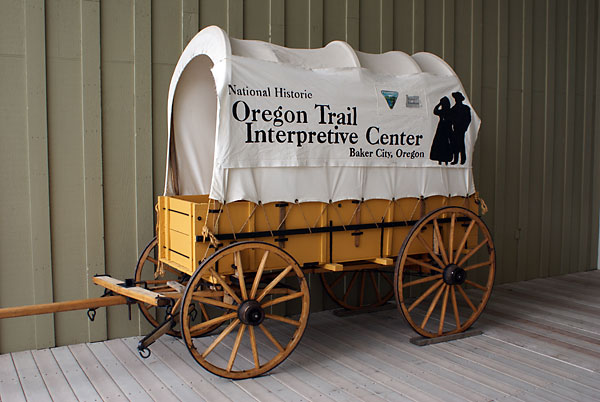
The
Oregon Trail Interpretive Center at Baker City Oregon, is excellent.
They have well done displays covering the entire trip and interesting
stories taken from diaries written by people who traveled the trail by
wagon train.
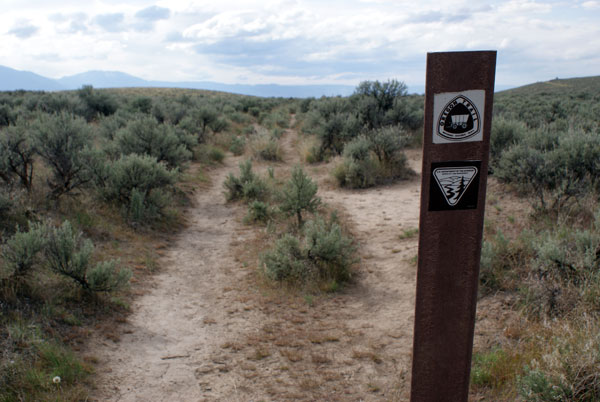
The
Interpretive Center sits on a hilltop near the actual route of the
Oregon Trail, and wagon ruts on the trail can still be seen.
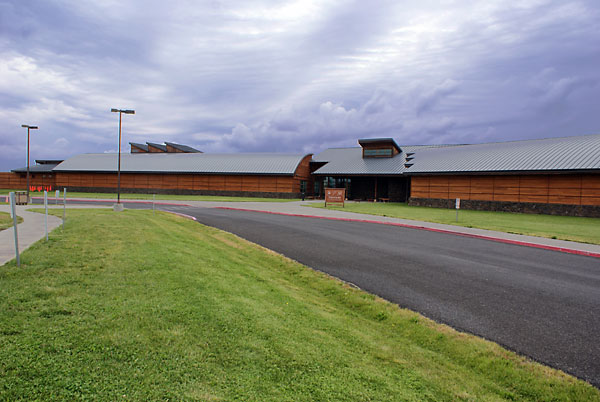
Our
next stop was the Tamastlikt Cultural Institute on the Umatilla Indian
Reservation near Pendleton, OR. It tells the story of the impact
of the huge number of emigrants traveling the Oregon trail on the
native American tribes living in this area at that time. Photography
inside the Institute was prohibited.
In 1836
a missionary couple, Marcus and Narcissa Whitman, headed to the Oregon
country to establich a mission for the Indian tribes. They chose a site
at Waiilatpu near what is now Walla Walla, WA, and built a mission.
Narcissa Whitman was the first white woman in the territory and her
trip showed others that women could endure the trials and tribulations
of the Oregon Trail. The mission became a supply point for emigrants;
the Oregon Trail went to their mission before turning west and heading
down the Columbia River. Marcus Whitman, besides being a missionary,
was also a doctor and treated the illnesses of the native population.
In 1847 a measles epidemic, most likely brought in inadvertently by the
emigrants, swept through the Cayuse Indians in the area, who had no
immunity to measles, and killed half of them. The Cayuse, seeing that
Whitman's medicine was ineffective, blamed Whitman and accused him of
poisoning the Cayuse. The Cayuse took revenge by attacking the mission,
killing Whitman and his wife, and eleven others at the mission. The
Visitor Center for the Whitman Mission Historic Site explained that,
according to local Indian customs, a medicine man was responsible for
the lives of his patients. If one of his patients dies, the family
members have the right to take the life of the medicine man. So this
attack on the Whitman mission was justified according to Indian
culture. But not according to white culture. The Army went after the
Cayuse, who eventually gave up five of their members that they said
were responsible for the attack. These five were tried, convicted, and
executed. The attack on the Whitman mission ended Protestant missions
in the Oregon country and led to war between the Cayuse and local
militia.

The site of the Whitman mission, showing the foundations of the buildings and a memorial on the hilltop to those who died here.

The gravesite of those who died here.
Our
next stop was the Roadtrek rally at Prosser, WA, which is in their wine
country. After the rally, we continued to follow the Oregon trail to
the end.

The
Columbia River gorge. The Columbia river has been tamed a by a series
of dams, so it is "quiet water" now. Many of the emigrants tried
floating their wagons on rafts down the Columbia. Before the dams were
built, there were treacherous cascades that made it impossible to
float rafts all the way down the river.
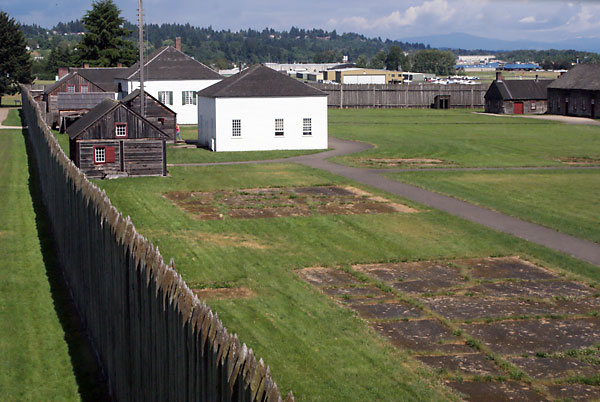
Upon
reaching the Williamette valley, the emigrants stopped at Fort
Vancouver, which was esablished by Hudson's Bay company in 1825 as a
fur trading post, and taken over by the British navy to extend British
claim to the area. The fort was led by John McLoughlin, whose job was
to keep peace with the Indians, squeeze American's out of the market,
and establish British claim to all of Oregon (the boundary between
Canada and the U.S. had not yet been established. McLoughlin, however,
aided the emigrants by selling them food and supplies and extending
them credit. This strengthened U.S. claim to the territory.
The
fort has been reconstructed on the original site and is currently an
active archeological site operated by the National Park Service.
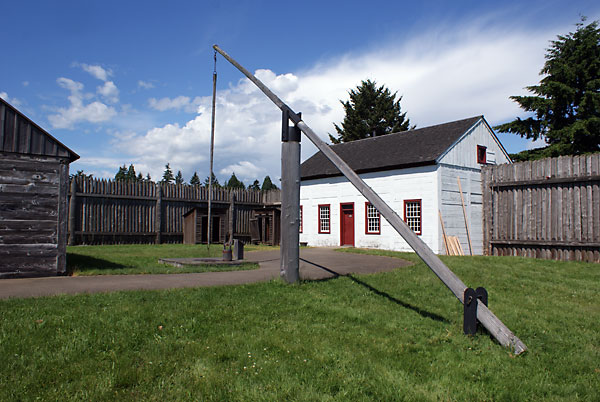
Some
of the buildings in the reconstructed fort and the well. Note the
outhouses in the background; they seem too close to the well for me.
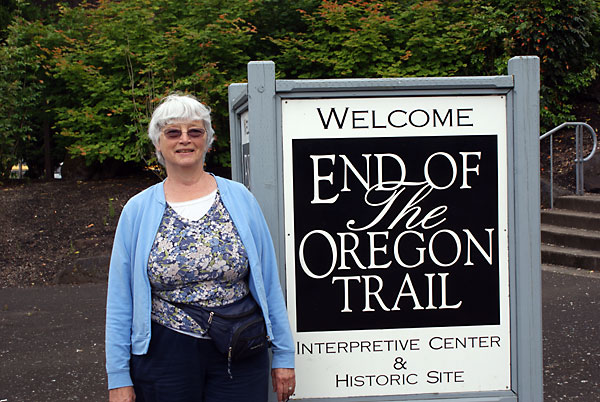
Oregon
at last! We reached the end of the Oregon Trail at Oregon City, OR. The
interpretive center was closed, however, to allow building a
larger center. A few of the exhibits from the center were on display in
the Oregon Welcome Center next door, but it was a let down.
From here we head for the Oregon coast and south to California.









